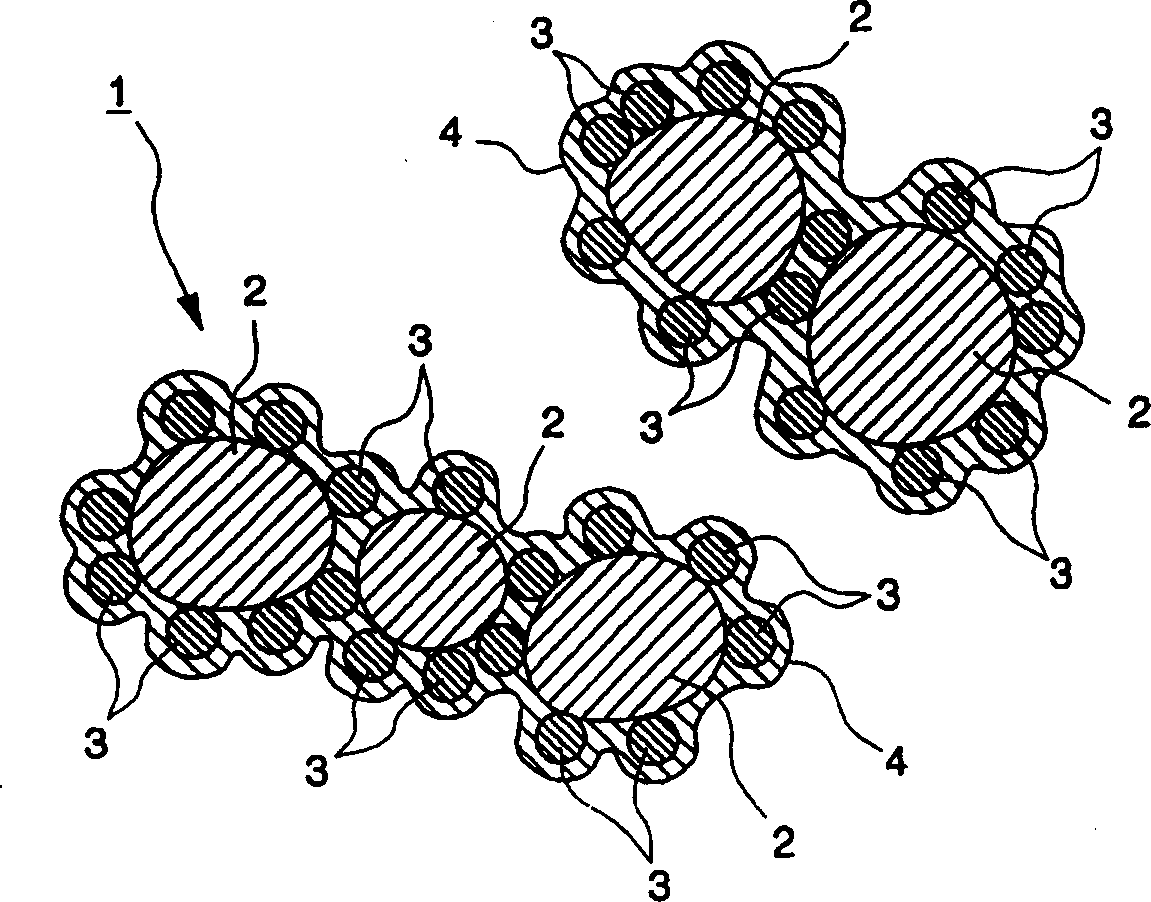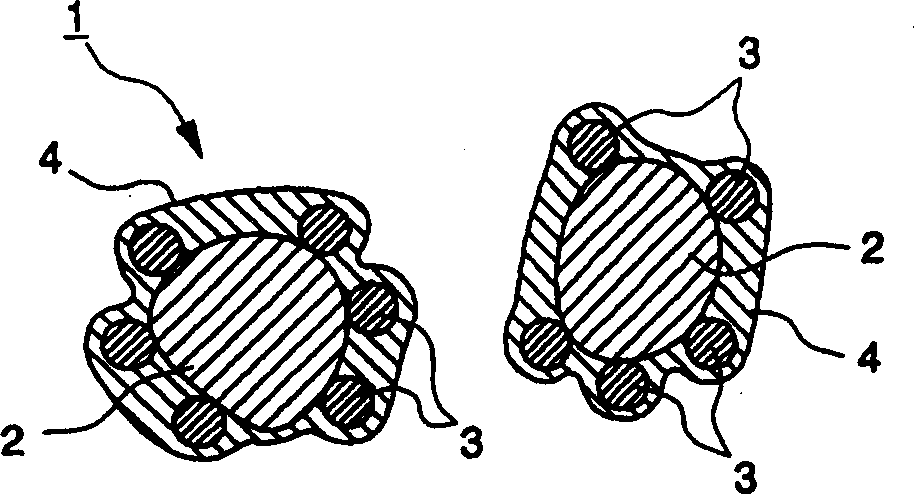Carbon-containing material and lithium secondary cell containg the same material
A polymer material and conductive carbon technology, applied in battery electrodes, transportation and packaging, circuits, etc., can solve the problems of poor cycle characteristics, low charge-discharge efficiency, low conductivity, etc., to prevent cycle efficiency from getting worse, Improved charge-discharge capacity and improved charge-discharge efficiency
- Summary
- Abstract
- Description
- Claims
- Application Information
AI Technical Summary
Problems solved by technology
Method used
Image
Examples
Embodiment 1
[0144] 2 parts by weight of Si particles having an average particle size of 390 nm were mixed with 1 part by weight of carbon black. Si particles are mainly composed of crystalline silicon, and the resistivity of carbon black is 10 -4 Ω·m.
[0145] 10 parts by weight of the phenolic resin was dissolved in isopropyl alcohol to prepare a solution. A mixture of Si particles and carbon black was added to the solution and stirred well, and then the solvent was removed to obtain a composite particle precursor in which carbon black and a phenolic resin layer were attached to the surface of the Si particles.
[0146] The composite particle precursor was heated at 1000° C. for 180 minutes in an argon (Ar) atmosphere to carbonize the phenolic resin layer, thereby forming a 0.05 μm thick hard carbon layer on the composite particle surface.
[0147] According to the flexible strength of carbonized material is about 800kg / cm 2 In fact, when the phenolic resin itself is carbonized under ...
Embodiment 2
[0153] The carbonaceous material was prepared in the same manner as in Example 1, except that the average particle size of the Si particles was 700 nm.
Embodiment 3
[0155] The carbonaceous material was prepared in the same manner as in Example 1, except that the average particle size of the Si particles was 1060 nm.
PUM
| Property | Measurement | Unit |
|---|---|---|
| Average particle size | aaaaa | aaaaa |
| Resistivity | aaaaa | aaaaa |
| Average particle size | aaaaa | aaaaa |
Abstract
Description
Claims
Application Information
 Login to View More
Login to View More - R&D
- Intellectual Property
- Life Sciences
- Materials
- Tech Scout
- Unparalleled Data Quality
- Higher Quality Content
- 60% Fewer Hallucinations
Browse by: Latest US Patents, China's latest patents, Technical Efficacy Thesaurus, Application Domain, Technology Topic, Popular Technical Reports.
© 2025 PatSnap. All rights reserved.Legal|Privacy policy|Modern Slavery Act Transparency Statement|Sitemap|About US| Contact US: help@patsnap.com



